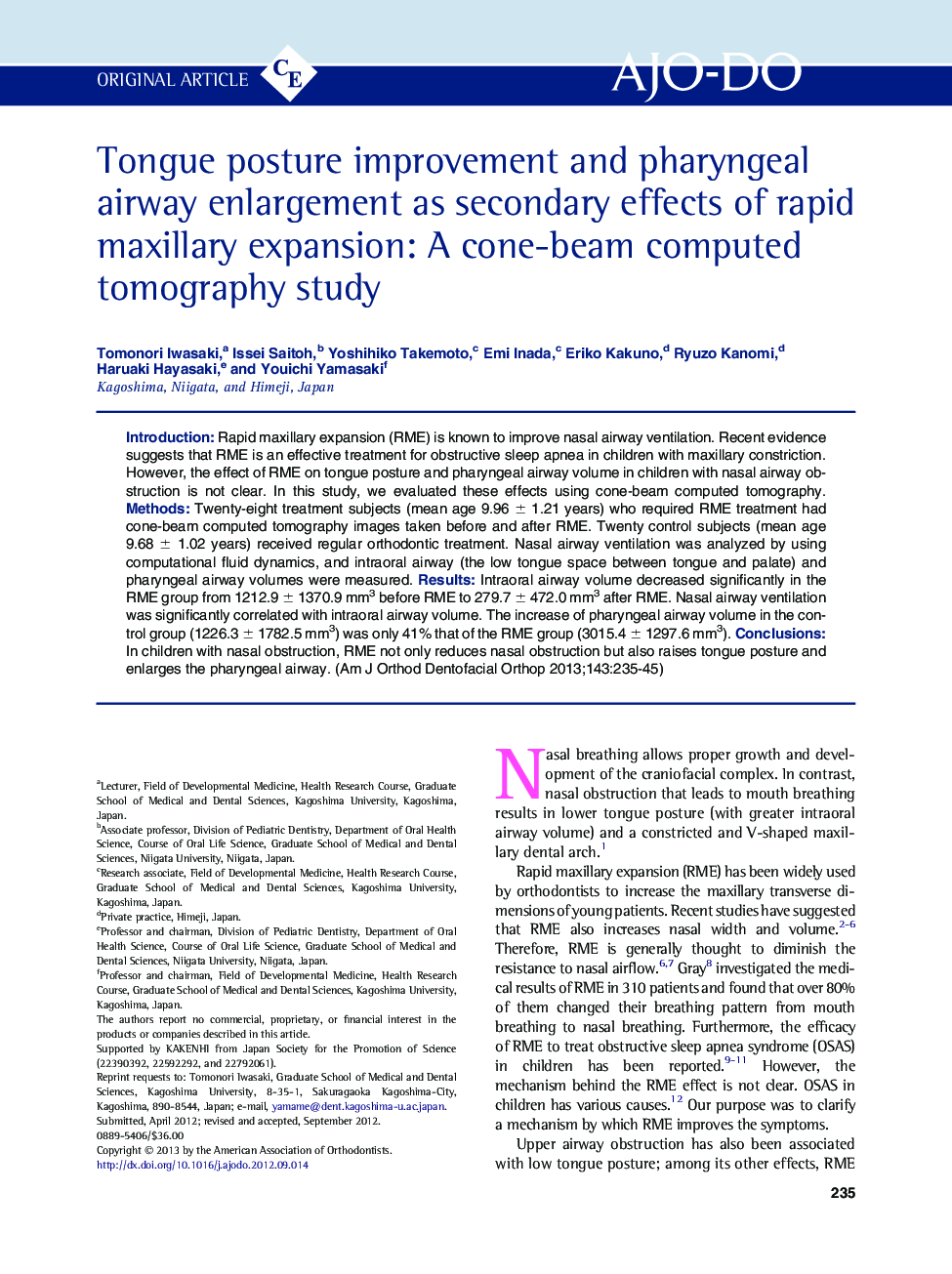| Article ID | Journal | Published Year | Pages | File Type |
|---|---|---|---|---|
| 3116947 | American Journal of Orthodontics and Dentofacial Orthopedics | 2013 | 11 Pages |
IntroductionRapid maxillary expansion (RME) is known to improve nasal airway ventilation. Recent evidence suggests that RME is an effective treatment for obstructive sleep apnea in children with maxillary constriction. However, the effect of RME on tongue posture and pharyngeal airway volume in children with nasal airway obstruction is not clear. In this study, we evaluated these effects using cone-beam computed tomography.MethodsTwenty-eight treatment subjects (mean age 9.96 ± 1.21 years) who required RME treatment had cone-beam computed tomography images taken before and after RME. Twenty control subjects (mean age 9.68 ± 1.02 years) received regular orthodontic treatment. Nasal airway ventilation was analyzed by using computational fluid dynamics, and intraoral airway (the low tongue space between tongue and palate) and pharyngeal airway volumes were measured.ResultsIntraoral airway volume decreased significantly in the RME group from 1212.9 ± 1370.9 mm3 before RME to 279.7 ± 472.0 mm3 after RME. Nasal airway ventilation was significantly correlated with intraoral airway volume. The increase of pharyngeal airway volume in the control group (1226.3 ± 1782.5 mm3) was only 41% that of the RME group (3015.4 ± 1297.6 mm3).ConclusionsIn children with nasal obstruction, RME not only reduces nasal obstruction but also raises tongue posture and enlarges the pharyngeal airway.
